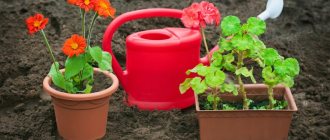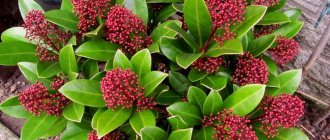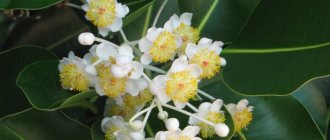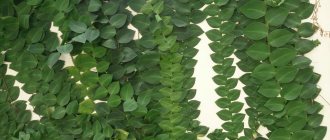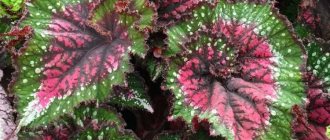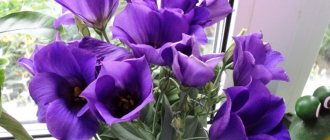Description
Ficus is a representative of the Mulberry family . The plant has become widespread - there are about 900 species. There are evergreen and deciduous types of ficus.
As for where and in what countries this indoor flower grows in the wild, it feels best in regions with a tropical and subtropical climate.
The homeland of ficus is Borneo, Southeast Asia, Ceylon . History is silent about how ficus came to Russia, but since the beginning of the 19th century, almost every house had this plant in a wooden tub or box.
The tree can reach 30 meters in height, and the size of their leaves often approaches the meter mark.
Depending on the type, ficus leaves can be green or two-colored, large or, conversely, very small.
We invite you to learn more about some types of ficus grown at home. Read all about Ficus Benjamin, Rubber-bearing, Ampelous, Variethis, Carica, Lyrata, Creeping, Retuza, Amstel King, De Dumbbell, Triangular, Ginseng, Ali, Microcarpa.
The inflorescences have a very unusual structure - the pear-shaped axis or capitate shape can be hollow, with a hole at the top. The flowers are located inside the wall and are pollinated by insects . After pollination, small fruits may develop that form infructescence. At home, the fruits can be seen quite rarely.
Reference! Many people are interested in how many years a plant lives. At home, with proper care, a ficus can live for about 15 years.
Ficuses. Plant species
Ficus plants take the place of one of the most favorite indoor flowers for many. The types of these evergreens are so diverse that they confuse even experienced gardeners. In nature, there are about two thousand ficus plants of different sizes, shapes and leaf colors, but only about two dozen species are successfully grown at home. Some of them take the form of a tree and grow to impressive sizes, others curl like vines. The varieties of ficus will amaze anyone, so everyone can choose a plant that they like.
This species ranks first in popularity; both green and variegated forms are considered. The former are easier to grow, the latter require more careful care. Sri Lanka, India, western Africa, Nepal - these are the places where rubber-bearing ficuses came to us. The species of these plants amaze with the variety of leaf colors; the Black Prince looks especially bright and impressive. At home, they grow up to 2 m in height, the leaves are large - about 15–20 cm wide, 35 cm long. They require moderate watering, the variegated forms love to swim, respond well to spraying, and do not tolerate direct sunlight. Green plants thrive in the shade.
We are loved by many gardeners due to its beautiful leaves and universal size. There are quite a few varieties of these ficuses in the world. The plants differ only in the shape and color of the leaves, but in appearance they all look like a weeping tree. The trunk is very thin, so to prevent it from falling, several plants are planted in one pot. The color of the leaves is two-color or one-color light green. The stems can be trimmed to adjust the shape of the ficus.
Known for its heart-shaped leaves with a sharp tip. As a result of the pressure drop, droplets of sap appear on them, which are considered the tears of the sacred tree. Taiwan, India, Thailand, China are the countries from which these ficus plants came to us. The species of these plants are few in number; they are revered by Buddhists because it is believed that Buddha achieved nirvana under this tree. Ficus does not tolerate dry air and may shed its leaves due to the heat.
If someone really wants to have a real tree with a drooping crown at home, then these are the most suitable ficuses. Species of this plant came to us from the island of Java; in nature it grows up to 20 m in height. The narrow leaves grow up to 30 cm in length and are somewhat similar to oleander or willow. The advantages include the speed of tree growth.
Only the most popular types of ficus used as indoor plants are listed. The huge variety of colors and shapes of leaves is amazing; some are tree-like, and some have herbaceous or liana-like trunks. Some ficus plants are so different and dissimilar from each other that it is even difficult to classify them as one species. Nevertheless, each of them is beautiful and unique in its own way. Ficuses decorate offices, living rooms, large halls, because these evergreen plants look harmonious in any room.
Photo
Look at the photo of how ficus grows at home.
And a photo of how it grows in the wild.
The necessary conditions
Ficus is not a very capricious plant. For it, you should choose a sufficiently lit place, but the light should not be direct. Western and eastern windows are considered favorable for ficus. If there is a lack of light, the plant will have fewer leaves.
Ficus is a heat-loving plant . In the summer, when all the flowers are put on the balcony, it is left in the apartment. It does not tolerate drafts and strong winds. A comfortable temperature is considered to be from 15 to 20 degrees, and in summer – no more than 30.
Ficus is not the only decorative foliage plant successfully grown in our apartments. We bring to your attention a series of materials about indoor flowers of the same group: avocado, banana, trees, bushy plants, lianas, false palms, orchids, ferns. As well as plants with spear-shaped leaves, plants with grass-like leaves, carnivorous plants.
What is the homeland of the ficus
Ficus is one of the most common house plants. It has taken root in our homes so much that we have forgotten about its real home - the subtropical and tropical forests of Asia and Africa. There are more than 2,000 species in total , but only about 20 species are domestic breeds. But can they bloom?
Description [edit | edit code ]
Many species of ficus begin life as epiphytes, then form adventitious roots that reach the ground and grow into powerful columnar supports for a huge crown (banyan tree). The aerial roots of some epiphytic ficuses are capable of tightly entwining the trunk of the host tree, causing its death (the so-called strangling ficuses) [4].
The leaves are alternate, less often opposite, entire, serrated or lobed. The stipules are very large; they put on a bud, but in most cases they soon fall off and only occasionally persist after the leaves open. “Fig leaf” is a stable speech form in many languages, including Russian; depicted countless times in paintings and engravings by old masters.
All parts of the plant contain milky sap. Milky sap of some species ( Ficus heterophylla
,
Ficus sycomorus
,
Ficus indica
) is used in medicine.
The flowers are collected in axillary inflorescences, single or grouped in several, and sometimes forming a terminal spike or raceme on a leafless shoot.
The receptacle in the inflorescence is mostly in the form of a hollow ball or pear with a hole at the top; inside such a receptacle there are small flowers; men's together with women's or men's separately from women's; sometimes there are very few male flowers, and they are then located at the opening of the inflorescence, and female flowers occupy the entire remaining surface of it. With each flower, sometimes covering leaves develop, sometimes they do not exist. The flower consists of a 2-6-lobed or lobed perianth, which is more developed in male flowers. Stamens either 1, 2 or 3-6; their filaments are short, the anthers either protrude from the perianth or not. There is one pistil with a single-locular (less often 3-2-locular) single-seeded ovary, with a simple style that does not protrude from the opening of the receptacle. Pollinated by insects.
Trimming
Pruning ficus is a necessary procedure in indoor growing conditions, because this plant grows exclusively upward.
Ficus trees can be given almost any shape, the main thing is to know the basic rules of pruning :
- the event is carried out only in the spring, before active growth begins;
- not all types of ficus produce a fork after pruning the central shoot;
- the cut is made horizontally above the internode bud of a young plant and obliquely if the shoot has already hardened;
- When pruned, tall stumps not only look unsightly, but can also become a haven for fungal infections;
- Sections after trimming must be processed.
As for sanitary pruning, weak and dry shoots can be removed year-round.
Often, for very mature plants, rejuvenating pruning is carried out “under the stump”.
Pruning ficus to rejuvenate the plant
Next is a video with a detailed description of pruning ficus:
Hedge
You can weave spikelets and spirals from ficus, or even make a hedge out of them. To do this, young plants can be planted in an even row at the same distance. Ficuses that were planted in a circle look very beautiful.
Read all about what variations of elegant ficus planting exist here.
Landing
Mature plant
To transplant an adult ficus bought in a store into a permanent pot, you need:
- Tilt the plant to one side to remove it from the pot without damage.
- Next, the roots are freed, and the root collar is cleared of transport soil.
- It is important to cover the drainage hole with a mesh, and then pour a drainage layer of expanded clay and sand on top.
- Next, a thin layer of earth is poured in and compacted with your fingers. Without fanaticism, there is no need to deprive the soil of permeability.
- To make it convenient to water the plant, do not add soil to the very top - leave 2 cm to the edge of the pot.
There is no need to deepen the root collar of the plant too much . This can cause leaves to fall off and brown spots to appear.
Attention! When replanting, it is necessary to provide for the installation of a support that will support the crown of the plant.
Read this article on how to transplant a ficus correctly and painlessly.
Semyan
Soak ficus seeds for a day in a special solution.
The use of Humate, Heteroauxin, and Epin will increase seed germination and help increase disease resistance. Plant the prepared seeds in the soil, which you need to prepare yourself. It is better to use light soil, adding a little sand to it . The substrate must be homogeneous and crumbly.
It is better to choose containers for germination that are wide and shallow. It is worth planting several seeds, then the germination rate will be one hundred percent, and from the resulting seedlings it will be possible to select several of the tallest and strongest specimens.
- Seeds are planted to a depth of about 1 cm.
- The distance between them should be 1.5 cm.
- Sprinkle with substrate or coarse sand, it will absorb excess moisture.
- Cover with a greenhouse and ventilate from time to time.
We also suggest that you read another article on the topic of growing ficus plants at home.
How to make soil for ficus
If you know these simple rules, you can prepare soil for ficuses yourself, observing the following proportions:
For young ficus
1 part leaf humus 1 part peat 1 part sand
For adult ficus
Option 1
2 parts leaf humus 2 parts turf soil 1 part sand
Option 2
1 part leaf soil 1 part turf soil 1 part peat 1 part sand
To achieve soil looseness, components such as expanded clay, coarse sand, and charcoal are added.
Expanded clay gravel, in addition to promoting better air permeability of the soil, absorbs water and nutrient solutions like a sponge, and then gradually shares this supply with the root system of the plant.
Vermicompost, a waste product of earthworms, is included in individual mixtures not only as an organic fertilizer, but also as a growth stimulant. Improves survival rate, accelerates plant adaptation during transplantation.
Lime and dolomite flour reduce soil acidity. In addition, dolomite is a natural mineral that enriches the soil with calcium and magnesium, and the latter is involved in the formation of chlorophyll in the cells of all green plants.
Wood ash also serves as an additional source of trace elements, potassium and phosphorus.
Reproduction
Ficus can be propagated in the following ways:
- By cuttings.
- Air layering.
- Leaf.
The procedure can be carried out during the warm season.
Cuttings
Cuttings are carried out in this way:
- The apical shoots with three pairs of leaves are cut off. The length is about 10 cm, the lower leaves need to be removed.
- The prepared soil (soil with sand or peat with perlite) is poured into the pot.
- The cuttings are planted in pots.
- They are covered with a greenhouse.
- After one and a half to two weeks, roots will appear and the plant can be planted in small pots.
Ficus species with green leaves take root faster than variegated ones. Rooting works best at a temperature of about 25 degrees. Rooting of cuttings can also be done in water.
Below is a useful video with a detailed description of the cutting process:
Air layering
The method of propagating ficus by air layering can be used if its stem is very bare at the base.
What should be done:
- Choose a straight and long shoot; excess leaves can be removed.
- Using a sharp knife, make two cuts on the shoot at a distance of 3 cm from each other.
- Clean the bark between the cuts and powder the surface with Kornevin.
- Wrap the cut with sphagnum moss.
- Cover the moss with film and tie tightly on both sides.
Important! Moss should always be kept moist. - After some time, the roots will appear, the shoot needs to be cut off underneath them and the plant should be planted in a pot.
Read all about ficus propagation at home in this material.
Ficuses and their varieties. Growing and caring for ficuses
Varieties of ficus. Caring for ficus trees at home
Ficuses have long been part of our lives as a houseplant. Thanks to the rich variety of species , growing ficus trees makes it possible to diversify the landscaping of our rooms with tall and beautiful plants. The fairly simple care of ficus plants makes them quite popular for growing indoors. The variety of shapes and types allows you to grow only one ficus in the house, and at the same time, their owner does not have time to get bored.
Let's take a closer look at this wonderful representative of the plant world and find out how to successfully grow ficus in your home and how to care for ficus in the future, and also study the history and myths surrounding it.
History of the origin of ficus
Each of us at least once in our lives planted a ficus in our house, or at least saw it in someone’s house or office, but few people wondered where this plant came to us from. Ficus is also called the “rubber tree” and it’s not for nothing that it consists of as much as 15% of this substance. And the ficus came to us from Asia, to be more precise from its southern part. The first mention of this tree dates back to approximately 290 BC.
There are more than 800 species of Ficus, but only a few are suitable for indoor growing. At the end of the 20th century, ficus trees lost their popularity and became less and less common in houses and greenhouses, but these days ficus has gained momentum again and can be found everywhere, from rooms in houses and apartments, to botanical gardens and private greenhouses.
Myths about Ficus
It is believed that the Ficus plant is not only simply beautiful, but also has some magical properties. It is believed that it drives away evil spirits from the house that are trying to get into the house, absorbs all kinds of negative energy directed at the home in which it grows and at its owner. Ficus is also credited with the ability to attract wealth and good luck into the home.
In Buddhism, Ficus is the personification of spirituality. In the temples of Ceylon, it is the Ficus that always greets visitors at the entrance. According to legends, you need to tie a bright ribbon on it to get good luck and luck from it. Buddhists believe that under the cover of the ficus tree is the Buddha himself, and it is under it that he enters the state of nirvana.
Botanical characteristics of ficus
Ficus mulberry plant. It grows in the form of a bush or tree. A ficus tree, under suitable conditions in the house, can reach a height of up to 2 meters.
Ficus is a long-lived plant and by planting it you can live with it under the same roof for many years. Ficuses are light-loving, but at the same time they tolerate shade well. They cannot tolerate low temperatures; they are thermophilic. The root system is quite large. Ficus is not at all picky about soil. The plants are mostly glossy; some types of ficus have very large leaves and can be 40 cm in diameter.
Varieties of ficus
There are a lot of different types of ficus, but not all of its representatives are able to grow indoors. We will look at the most popular species that can easily be grown at home or in greenhouses.
Ficus rubbery
Ficus rubber is one of the most popular species. When young, it is a single-stemmed plant; from the age of two it can begin to sprout lateral branches. New leaves appear at the tops of the branches.
When the ficus grows in open ground, it produces inflorescences, but when grown indoors, flowering practically does not occur.
Ficus loves large flowerpots because it has a large root system. If it is grown indoors, it may often not produce side shoots for a long time and begin to shed its lower foliage. If this happens, plant the ficus in your flowerbed for the summer in a place with moderate shade, provide regular watering and it will not be slow to please you with side branches; if it is not possible to plant it outside, change your flowerpot to a larger one and renew the soil, preferably with a store-bought substrate add 50/50 regular soil from the street.
The new ficus leaf has a reddish-brown tint when blooming. The leaves are fleshy, glossy and very heavy, so it is better to give the young tree even support so that the trunk does not bend. Do not place this type near a heat source such as a radiator.
The rubber-bearing ficus tolerates both sunny and shady places; it is not at all picky about the conditions. It is best to clean the leaves of this species with a soft cloth slightly moistened with water.
Ficus benjamina
Ficus benjamina is perhaps the most beautiful representative of the ficus family. It is a rather beautiful tree with small leaves, pointed towards the edge, and have a light or dark green color.
The shape of the tree is a bit like a birch tree. The tree is quite branchy, which allows it to be formed in various forms, including bonsai.
An adult tree grows up to 2 meters. It is not picky about the conditions, it can stand on both the sunny and shady side of the room. The root system is smaller than that of the rubber ficus and can grow in smaller pots.
It is not picky about soils and does not require a special substrate. Needs periodic pruning of excess branches. It lends itself very well to interweaving branches to form a crown. The young plant does not require support.
Ficus Ginseng
Ficus Ginseng is the species most often used as a bonsai. It has a very powerful crown and the leaves against the background of such a powerful trunk look like small bouquets of leaves, the leaves are oval and pointed at the edges.
The peculiarity of this species is that three times a year it completely changes its leaves and produces new fresh leaves. It is not as picky about soil as its predecessors; for planting it is better to use a special mixture, which can be easily purchased at any specialized store.
An adult plant grows up to 0.5 meters, which makes it possible to grow this type of ficus in small rooms. Perfect as an interior detail; if you want to create an interior in an oriental style, then this is exactly the plant you need.
Another feature of this species is the fruits that the plant produces, which are initially yellow in color; after ripening they become dark red.
Ficus Montana or mountain
Ficus Montana or mountain - is a creeping shrub and, oddly enough, is considered a weed in its homeland. But in our country this “weed” grows very well indoors and is great for landscaping the walls of a room in hanging flowerpots.
The plant is very unpretentious, grows well in any lighting and temperature, except, of course, sub-zero temperatures, after all, it is a ficus, and they are heat-loving. It is also not picky about soils. The leaves are slightly rough, reaching 8 cm in length. Just like Genseng, it produces fruits that change color, from yellow to red with small specks.
Ficus carica or fig
Ficus Carica or fig - has a rather powerful brown trunk. The main feature of this variety is its unusual leaves, in shape they resemble oak leaves, but their main feature is the small hairs on the back side, if touched, they release an odorous substance with a specific smell.
This species has a particularly caustic sap; if it gets on your skin, it can cause quite severe irritation, so it is best to wear gloves when cutting and shaping. Not particularly picky about soil.
Ficus Melanie
Ficus Melanie - This ficus is most common in Indonesia where it is considered one of the sacred plants. This species develops in a very interesting way, initially it is just a trunk without branches, over time it produces so-called aerial roots, which descend into the ground and form the so-called banyan tree.
The leaves have an epileptic shape, are dense, the color of the leaf is green closer to a dark tone, the ends of the leaves are pointed. It has the ability to form fruits with poisonous juice that can cause irritation.
It is not very picky about conditions and cannot tolerate being near a heat source such as radiators. It is better to use the soil with the addition of a substrate.
Ficus Parcella
Ficus Parcella - what distinguishes it from others is its branches, or rather their shape, they are drooping. The leaves are large, regular oval in shape, light green in color with spots of various shapes, and the color is whitish-yellow.
Ficus Pracella grows quite quickly. You can place the plant both on the sunny and shady side of the room; it is not fussy about lighting. With the onset of summer, ficus can be easily planted in open ground before the onset of cold weather.
Ficus ivy
Ficus Ivy -leaved is a climbing plant. The branches are long, it needs sufficient space for weaving. It is best to plant it in a hanging flowerpot or place it on high furniture. Ideal for vertically gardening a room or greenhouse.
The foliage of this type of ficus is green, without any inclusions, and has a three-lobed shape. Not picky about lighting. Able to grow fully in any soil.
Ficus Pumila White
Ficus Pumila White - despite the fact that it is a ficus, it belongs to the vines. Well suited for vertical gardening of rooms and greenhouses. The shoots are long, they can reach 5 cm in thickness, along the entire length of the shoot this plant sends out adventitious roots that can germinate, so be careful if there are other flowerpots with plants nearby, this vine can reach them, germinating and destroying another plant.
The leaves are oval-heart-shaped, they are located completely along the entire length of the shoot in two whole rows, the surface is rough with a mesh pattern. It is quite easy to care for.
Ficus Varifolia
Ficus Variegated - the name of this ficus speaks for itself; it was given to it because on one tree you can find leaves that are completely different in shape. An adult plant grows over a meter.
The leaves are dark green and also have brownish spots. This species is also periodically decorated with fruits, which, in their shape and color, resemble the well-known olive. Ease of care and diversity of appearance make this species unlike other indoor trees.
Ficus Retuza
Ficus Retuza - also known to many as Bay Tree or Cuban Ficus . It has the shape of a tree. Good for creating Bonsai.
The leaves of this species are ovate with a pointed end, the color of the leaves is dark green. It has a unique air exchange, this happens thanks to special channels on the trunk; they look like reddish spots on the crown of a tree.
This species is very easy to give the desired shape, thanks to the flexibility of the branches. Does not tolerate extreme heat indoors or being near heat sources.
Ficus Rubiginosa or Rustifolia
Ficus Rubiginosa - also known to many as Rustleaf , got its name due to the unusual formation at the base of the leaf, it seems slightly fluffy and has a reddish-brown color, reminiscent of a coating of rust.
Young leaves and shoots also have a reddish color. Like the rubber ficus, it initially has an even trunk with a small number of leaves; with age, it also begins to produce lateral shoots. Cannot tolerate being near heat sources. Not picky about soil.
Ficus Sacred Fig
Ficus Sacred Fig - this species is surrounded by myths associated with Buddhism. In countries where Buddhism is preached, this plant is considered sacred; supporters of this faith believe that it was under this tree that Prince Gautama carried out his transformation into Buddha.
The leaves of the ficus have the shape of a heart, and at its end there is a unique drip point; when the atmospheric pressure changes, the tree begins the so-called “sacred cry”, it manifests itself by the appearance of juice that drips on the drip point. It can safely be called a barometer among plants. But despite all its “sacredness,” the tree does not require special care.
Ficus triangularis
Ficus Triangular - the name of this species speaks for itself. It has a very interesting shape of leaves, they look like a triangle, the base of which is attached to the base of the trunk; to many they resemble hanging hearts. This ficus grows in the form of a shrub, is not tall and is well suited for small spaces.
Ficus planting
To plant a ficus, it is best to immediately choose a larger pot; ficuses have a fairly large root system and if planted in a small one, then you will have to replant it over time.
If you do not want a too large plant, then you need a flowerpot with a volume of less than 10 liters, it is better for a small plant to take a maximum volume of 5 liters. It is best to put drainage at the bottom. Ficus is not picky about soils; you can plant it either in a special substrate or in ordinary soil, grow in both soils, it will be the same.
It is better to immediately choose a place where it will stand, this is for your convenience, because it is tender to a large flowerpot and moving it constantly will be problematic. A place with moderate lighting is best suited; ficus can grow in either a sunny or shady place, but still moderate lighting is most suitable for plant growth.
The optimal temperature for growing ficus is 18...24°C. In winter it is 3-4°C less.
Watering ficus
Watering a ficus is not a troublesome task. It does not require a special watering schedule. It is enough not to overdry the soil, but it does not tolerate flooding, so you should not try too hard in watering the ficus, such efforts can destroy the plant. If the irrigation system is disrupted, ficus trees shed their leaves.
Ficuses love spraying on the leaves. During periods of high temperatures it must be sprayed more often. In summer, ficus will need spraying 2-3 times a week, and in winter once every seven days will be enough.
If the leaves are very dusty, you can even buy a ficus under the shower, tilting it so that water does not get into the ground, otherwise you risk flooding it, but this method is, of course, only suitable for small plants. For larger ficus plants, wipe the leaves with a damp cloth to remove house dust.
Fertilizers for ficus
It is better to fertilize ficus with simple mineral fertilizers, which can be easily and inexpensively purchased in a specialized store.
From spring to autumn, ficuses are fed once every 12 days, and in winter - once every 20 days: 1 full teaspoon of “Agricola for ornamental plants” or 1 tablespoon of liquid fertilizer “Effecton for home flowers” (this feeding) is diluted in 3 liters of water can be done 6-8 times and alternate it with the first).
Do not forget to spray the ficus more often with the growth stimulator “Bud” (1 g per 1 liter of water). After treatment with this solution, the leaves of the plant will be as good as new, fresh and shiny.
If you have a large flowerpot, you can even add a little ordinary humus to the soil, but just a little, and carefully dig the soil with a small garden shovel. Sometimes it’s worth pouring water slightly sweetened with sugar.
Ficus tree pruning
If you are growing a tree, you can safely trim it as you need, if you form a certain shape. But it is worth remembering that the sap of ficus trees is poisonous and when pruning there will definitely be juice, wear gloves for work, otherwise you risk getting skin irritation and, of course, do not let the sap get into your eyes. The best time to prune ficus is early spring.
Ficus propagation
Ficus propagates quite easily, just cut a branch and place it in water in a lighted place, it will quickly take root and be ready for planting. There is no need to create a greenhouse for a young plant; it will be accepted very well anyway, because this plant originally grew in nature, and therefore is not picky about the conditions.
Ficus diseases and pests
Ficus is not susceptible to any diseases. If suddenly its leaves begin to fall off, it means that your ficus is light-loving, this also happens, then you just need to change the place to a sunnier one and everything will be in perfect order again.
Insect pests that can damage your ficus are scale insects and spider mites. To combat scale insects, use the drug “Aktara” (1 g per 10 liters of water), “Karbofos” (40 g per 10 liters of water) or “Iskra” (1 tablet per 10 liters of water).
Wiping with a sponge dipped in a strong soap solution is effective against spider mites. You need to wipe both the leaves and the trunk.
Now you have learned everything about Ficus, and growing them will not be difficult for you, and the result will bring a lot of pleasure from the beautiful appearance of the plant.




